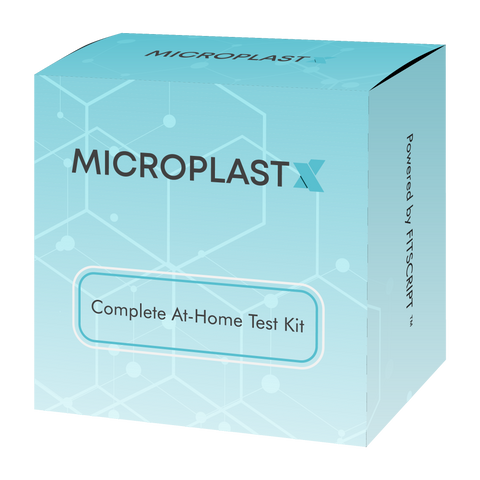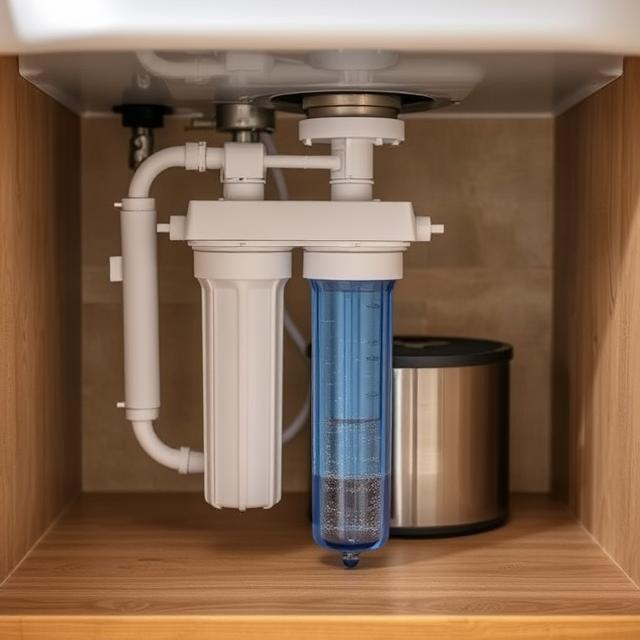Does Reverse Osmosis Remove Microplastics?
Microplastics are tiny plastic particles less than 5 millimeters in size. They come from many sources: breakdown of larger plastic debris, synthetic fibers from clothing, microbeads in cosmetics, and more. Because of their small size, microplastics can easily find their way into our drinking water supplies.
What Are Microplastics and Why They Matter for Your Water Quality
Microplastics enter water through environmental pollution — plastics discarded improperly end up in oceans, rivers, and groundwater. Wastewater treatment plants are not fully effective at removing these particles, so microplastics can slip through and contaminate tap water. Even bottled water is not always free from microplastics, as packaging itself can shed particles.

Health and Environmental Implications
The presence of microplastics in drinking water is a growing concern because these particles can carry harmful chemicals and microbes. When ingested, microplastics may accumulate in the body, potentially causing inflammation or other health issues. They also pose risks to aquatic life and ecosystems by disrupting natural processes.
Understanding microplastics and their impact is crucial for protecting water quality and your health. This is why filtering microplastics out of your water and monitoring your personal exposure are important steps. To check your own microplastic levels, consider using the MicroplastX microplastics blood test kit, which provides an accurate measure of microplastics in your body.
The Science Behind Reverse Osmosis Water Filtration
Reverse osmosis (RO) is a water filtration process that uses a semi-permeable membrane to remove contaminants, including microplastics. It works by applying pressure to push water through the membrane, which blocks particles larger than its tiny pores.
How Reverse Osmosis Works at a Molecular Level
The RO membrane has pores about 0.0001 microns in size—much smaller than microplastics, which range from 0.1 microns up to 5 millimeters. This means RO systems can effectively trap microplastic particles, stopping them from passing through into your drinking water.
What Contaminants RO Targets Besides Microplastics
Besides microplastics, reverse osmosis removes:
-
Heavy metals like lead and arsenic
-
Chlorine and chloramine
-
Bacteria and viruses
-
Dissolved salts and chemicals
-
Sediment and turbidity
Proven Efficiency of RO for Microplastic Removal
Scientific studies show reverse osmosis systems remove nearly 100% of microplastic particles in water. Because of this high level of filtration, RO is considered one of the best home water treatment methods for reducing microplastics and other contaminants.
If you want to protect your water and monitor your personal exposure to microplastics, combining reverse osmosis filtration with personal testing is the most effective approach. MicroplastX offers a microplastics blood test kit that helps you understand how much microplastic is in your body and guides your health decisions.
Comparing Reverse Osmosis to Other Filtration Technologies
When deciding how to remove microplastics from your water, it’s important to compare different filtration methods to understand which one works best. Reverse osmosis stands out because of its ability to filter out extremely small particles, but other technologies also play roles in water purification.
Activated Carbon Filters
Activated carbon filters are popular for improving taste and removing chlorine, but they don’t effectively remove microplastics. The pores in carbon filters are too large to trap microplastic particles. While they reduce some chemical contaminants, relying on activated carbon alone will not remove microplastics from your water supply.
UV Purification
UV purification kills bacteria and viruses by exposing water to ultraviolet light, but it does not physically filter particles. This means UV systems cannot remove microplastics. They are often used as a final disinfection step after filtration but are ineffective for microplastics removal.
Ceramic Filters
Ceramic filters have fine pores and can trap some particles, including certain microplastics, depending on pore size. However, their effectiveness varies, and they generally cannot match the precision of reverse osmosis systems in filtering out the smallest microplastic particles.
Why Reverse Osmosis Is Best for Removing Microplastics
Reverse osmosis systems use a membrane with pores around 0.0001 microns, which is small enough to block microplastics and even nanoplastics. This makes RO filtration one of the most reliable ways to reduce microplastics in drinking water. Unlike other methods, reverse osmosis effectively removes:
-
Microplastics of all sizes
-
Heavy metals and chemical toxins
-
Bacteria and viruses
-
Dissolved solids and salts
Because of its comprehensive filtration, reverse osmosis is the preferred technology for households concerned about microplastics. To fully understand your exposure to microplastics beyond water, pairing RO filtration with the MicroplastX microplastics blood test kit provides an accurate picture of your personal microplastic levels.
Choosing and Maintaining a Reverse Osmosis System for Optimal Results
Selecting the right reverse osmosis system is critical to effectively remove microplastics from your water. Additionally, proper maintenance ensures the system continues to perform at its best over time.
What to Look for When Choosing an RO System
Not all reverse osmosis systems are equal, so consider the following:
-
Membrane Quality: Choose systems with high-grade membranes proven to remove microplastics and other contaminants efficiently.
-
Multiple Filtration Stages: Systems with 4 to 6 stages including pre-filters and post-filters improve overall water quality and protect the RO membrane.
-
Certifications: Look for NSF/ANSI certifications verifying microplastics and contaminant removal capabilities.
Maintaining Your RO System for Microplastics Removal
Proper upkeep maximizes microplastics filtration and extends system lifespan:
-
Replace pre-filters every 6 to 12 months to remove sediments and protect the membrane.
-
Change the RO membrane every 2 to 3 years or as recommended by the manufacturer.
-
Sanitize your system regularly to prevent bacterial growth and maintain water quality.
Tips to Enhance Microplastic Filtration Performance
-
Use sediment pre-filters to catch larger particles before water reaches the membrane.
-
Maintain proper water pressure to ensure the RO system functions optimally.
-
Periodically test your filtered water to confirm microplastics removal efficiency.
Combining a well-maintained reverse osmosis system with personal microplastics testing is the best way to protect your health. Our MicroplastX microplastics blood test kit lets you track your microplastic exposure directly and complements your water filtration efforts.

Complementing Water Filtration With Personal Microplastics Testing
Reverse osmosis is one of the most effective ways to remove microplastics from your drinking water. Its filtration membrane can trap particles much smaller than typical microplastics, ensuring cleaner water. However, reverse osmosis only addresses one part of the microplastics exposure problem.
Microplastics Come From More Than Just Water
Microplastics are everywhere—in the air we breathe, in the food we eat, and even in household dust. Because of this widespread presence, filtering your water alone won’t protect you completely from microplastic exposure.
-
Airborne microplastics from synthetic fibers and dust
-
Microplastics found in seafood and other foods
-
Microplastics from everyday plastic products in your home
Why You Need to Test Your Body for Microplastics
To understand your total microplastics exposure, testing your drinking water isn’t enough. You need to know how much microplastic has actually entered your body. That’s where MicroplastX’s microplastics blood test kit becomes crucial. It measures the microplastics in your bloodstream, giving you an accurate picture of your body burden.
-
Detects microplastics regardless of source
-
Provides personalized data on your exposure level
-
Helps identify the effectiveness of your filtration and lifestyle changes
How the MicroplastX Blood Test Kit Works
Our blood test kit is simple to use and scientifically validated. You provide a small blood sample, which is analyzed to detect microplastic particles. The results are detailed and easy to understand, empowering you with information about your microplastic load.
Combining Reverse Osmosis and MicroplastX Testing for Complete Protection
By using reverse osmosis to filter your water and the MicroplastX microplastics blood test kit to monitor your body, you address both external and internal microplastic exposure. This combined approach lets you:
-
Reduce microplastics in your drinking water effectively
-
Track your personal exposure over time
-
Make informed decisions about your health and environment
At MicroplastX, we believe that testing your body for microplastics is an essential step in taking control of your health in today’s plastic-filled world. Learn more about how the MicroplastX microplastics blood test kit fits into your comprehensive microplastic reduction strategy.

Testing Your Water and Ensuring Microplastic Safety at Home
Removing microplastics from your water is important, but ensuring your water remains safe requires regular testing. Simple home kits can detect basic contaminants, but microplastics need specialized testing methods.
Why Professional Microplastics Water Testing Matters
Professional labs analyze your water to detect microplastic types, sizes, and concentrations. Knowing this helps you:
-
Understand the true microplastic levels in your tap water
-
Choose the right filtration system tailored to your needs
-
Confirm that your current filtration system effectively removes microplastics
Maintaining Your Filtration System with Testing
Even a high-quality reverse osmosis system needs regular upkeep to remain effective. Over time, filters clog and membranes wear out. Testing your water periodically can catch problems early and keep microplastic removal at its best.
-
Replace filters according to manufacturer guidelines
-
Sanitize your system regularly
-
Monitor water quality for signs of filter degradation
The Importance of Testing Both Your Water and Your Body
While water testing shows you the microplastics entering your home, only testing your body reveals what actually accumulates inside you. The MicroplastX microplastics blood test kit lets you track your microplastic burden and evaluate how well your filtration and lifestyle changes are working.
Taking a Dual Approach to Microplastic Safety
Combining environmental water testing with personal blood testing allows you to:
-
Identify hidden sources of microplastics beyond water
-
Monitor improvements after filtration or lifestyle changes
-
Stay proactive about your health and environment
For those serious about minimizing microplastic risks, this dual testing strategy is the most effective way to protect yourself and your family. Visit MicroplastX to discover how our blood test kit can give you the knowledge you need for a healthier life.




